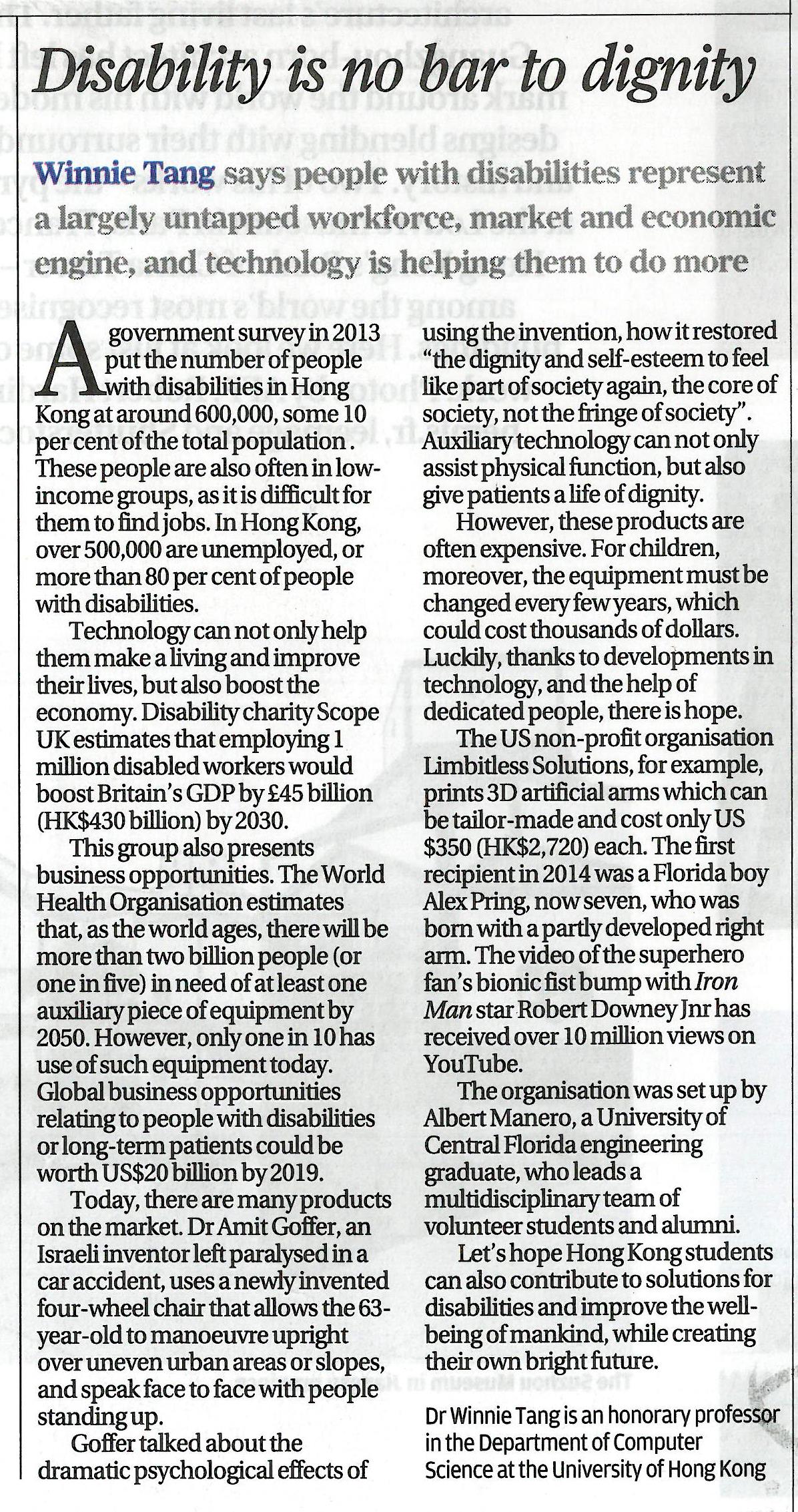網上版請按此

Disabilities is no bar to dignity
Winnie Tang says the disabled population around the world represents a largely untapped workforce, market and economic engine, and technology is now helping them to contribute more
A government survey in 2013 put the number of people with disabilities in Hong Kong at around 600,000, some 10 per cent of the total population. These people are also often in low-income groups, as it is difficult for them to find jobs. In Hong Kong, over 500,000 are unemployed, or more than 80 per cent of people with disabilities.
Technology can not only help them make a living and improve their lives, but also boost the economy. Disability charity Scope UK estimates that employing 1 million disabled workers would boost Britain's GDP by £45 billion (HK$430 billion) by 2030.
This group also presents business opportunities. The World Health Organisation estimates that, as the world ages, there will be more than two billion people (or one in five) in need of at least one auxiliary piece of equipment by 2050. However, only one in 10 has use of such equipment today. Global business opportunities relating to people with disabilities or long-term patients could be valued at up to US$20 billion by 2019.
Today, there are various products on the market. Dr Amit Goffer, an Israeli inventor left paralysed in a car accident, uses a newly invented four-wheel chair that allows the 63-year-old to manoeuvre upright over uneven urban areas or slopes, and speak face to face with people standing up.
Goffer talked about the dramatic psychological effects of using the invention, how it restored "the dignity and self-esteem to feel like part of society again, the core of society, not the fringe of society". Auxiliary technology can not only assist physical function, but also give patients a life of dignity.
However, these products are often expensive. For children, moreover, the equipment must be changed every few years, which could cost thousands of dollars over a lifetime. Luckily, thanks to developments in technology, and the help of dedicated people, there is hope.
The US non-profit organisation Limbitless Solutions, for example, prints 3D artificial arms which can be tailor-made and cost only US$350 (HK$2,720) each. The first recipient in 2014 was a Florida boy Alex Pring, now seven, who was born with a partly developed right arm. The video of the superhero fan's bionic fist bump with Iron Man star Robert Downey Jnr has received over 10 million views on YouTube.
The organisation was set up by Albert Manero, a University of Central Florida engineering graduate, who leads a multidisciplinary team of volunteer students and alumni.
Let's hope Hong Kong students can also contribute to solutions for disabilities and improve the well-being of mankind, while creating their own bright future.
Dr. Winnie Tang
Honorary Professor, Department of Computer Science, The University of Hong Kong